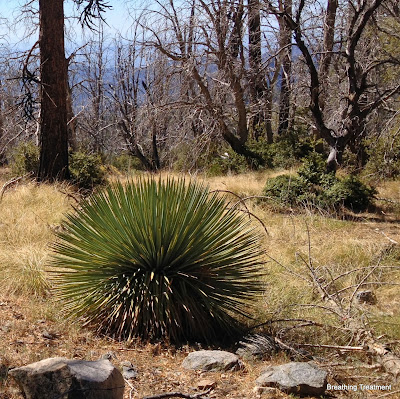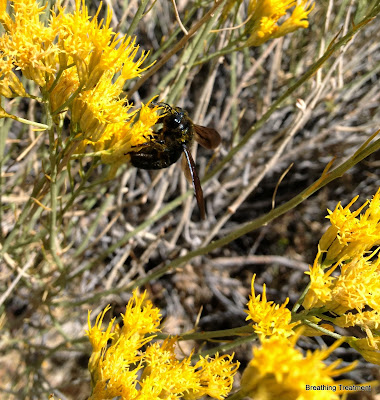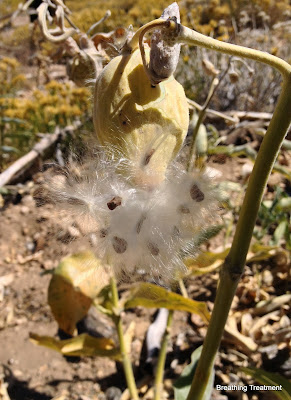More below. As always, I welcome corrections on my plant IDs.
Castilleja miniata (Scarlet Indian Paintbrush, giant red Indian paintbrush)
There was a lot of this (below). The leaves were shiny with oils and it looked like the picture of health, but I've no idea what it is. Low growing, no visible flowers. I had guessed some sort of milkweed, but I think that is not correct.
Probably Solidago, likely Solidago velutina (Oreja de liebre)
There were a few Elderberries left on the plants near the trail, so we tasted them. They were sweet and delicious. We left most for the birds. You could see the particular shade of green of the Elderberries dotting the hillside below.
Scub oak, buckwheat, and an unknown plant (close up above) were prevalent in the areas recovering from fire.
Some people dislike Buckwheat because they feel that it looks dead, but I think that the rusty red color makes such a statement that they ought to like it instead.
Above and below - I think that's Ericameria in the foreground. The slopes were covered with it in places as you can see.
Looking into the creek you can see the dots of color that are the small purple flowers shown close up above.
Well, maybe you can't, but I can in the original.
A local manzanita looked healthy everywhere it grew.
Lots of places.
The flowers were not yet all past their prime and this big bee was aggressively patrolling this Ericameria bush.
More Ericameria:
Manzanita fruit, anyone?
Here's an interesting buckwheat that is native only to Ventura, Los Angeles, and San Bernardino counties. It tends to grow out over the tops of granite boulders in a dense mat. It's Eriogonum kennedyi (southern alpine buckwheat). In this photo it's in proximity to manzanita. The manzanita doesn't tend to blanket the boulders, so this plant has found a niche for itself where it isn't interfered with by the neighbors.
Asclepias eriocarpa (Indian Milkweed):




















No comments:
Post a Comment